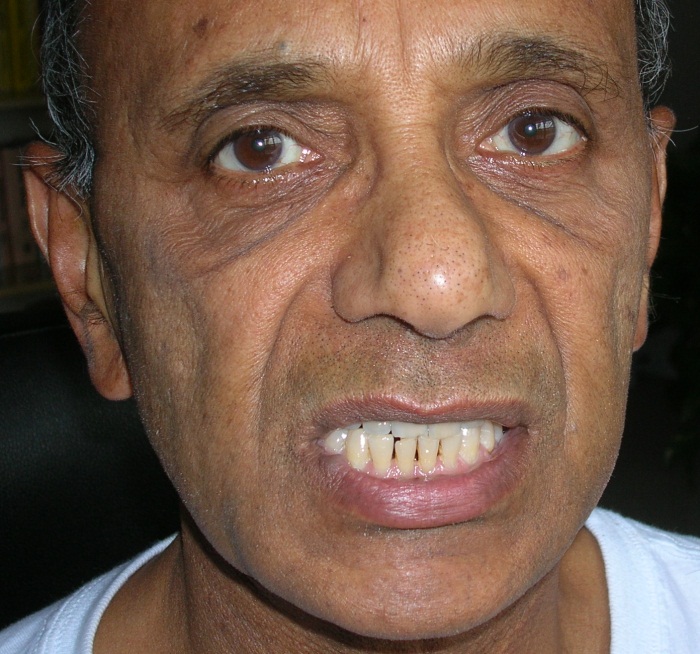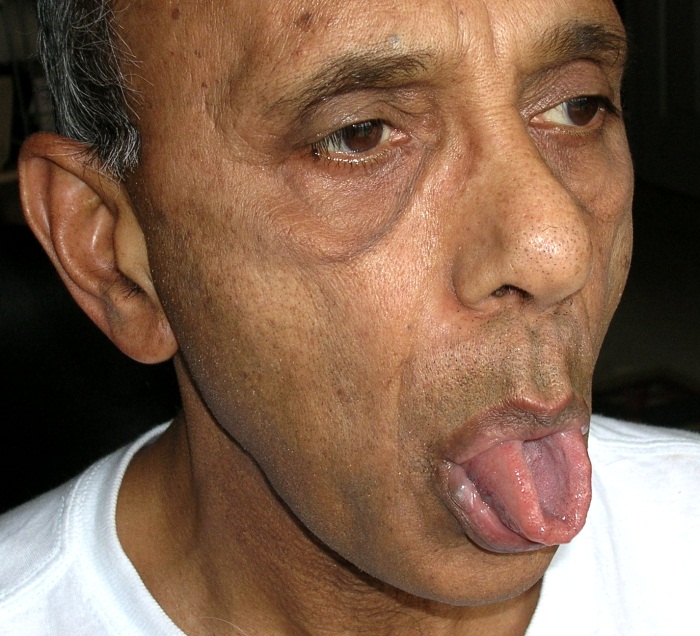In today’s post, I would like to introduce you to two breathing techniques which are jointly labeled as “cooling pranayama”.
The first one is called “sītkārī” (सीत्कारी) which literally means the breathing technique that “produces the hissing ‘seee’ or the ‘seet’ sound”. In English, it is usually translated as the “hissing cooling breath”. The second is called “śītalī” ( शीतली) which means the techniques that has a cooling effect.
These practices provide cooling not only at the physical level but also at the nervous and mental levels. They are highly effective in cooling the system during summer time. However, they can be practiced even during winter months as they calm the nerves down and also help release mental tension and stress. These pranayama techniques also help reduce blood pressure.
Both Shitali and Sitkari are similar to the Ujjayi pranayama discussed here. The main difference is in the inhalation. In the Ujjayi pranayama, the inhalation is through both the nostrils. On the other hand, in Sitkari the inhalation is through the gap in the teeth whereas in Shitali the inhalation is through the tongue which is pulled out and rolled into the shape of a tube. At the end of inhalation, the technique is identical to the one practiced in Ujjayi pranayama.
I hope you will enjoy practicing with me using the video demonstration.
Seetkari Pranayama
In the Hatha Yoga Pradipika, sitkari is described in verse 54 of chapter 2:
Sītkām kuryāttathā vaktre ghrānenaiva vijrmbhikām
Evamabhyāsayoghena kāmadevo dvitīyakah (2.54)
“While drawing the breath in through the mouth, make a hissing sound and then exhale through the nose. By this practice, one becomes as lovely as a second Kaamadeva (god of love).”
Step-by-step
- Sit in any comfortable cross-legged sitting posture with the spine upright, arms and shoulders relaxed.
- For the next few breaths, observe the flow of breath at the tip of the nose. This helps bring in a feeling of being centered and inward focused.
- Open the lips and bring the teeth together lightly.
- Take a long deep inhalation through the gap between the teeth. For each inhalation, use the deep 3-part breathing technique. Begin the inhalation by bringing the awareness to the lowest part of the lungs, using the diaphragm, to fill the belly like a balloon. Continue the inhalation by expanding the chest and the rib cage. Further inhaling, lift the collar bones up. Make sure that the breathing remains smooth, continuous and causes no strain of any kind.
- At the end of inhalation, hold the breath (kumbhaka) for a few seconds. While holding the breath, apply the Jalandhara Bandha (Chin Lock) by lowering the chin down to the chest, as well as the Mula Bandha (Root Lock). Make sure that you retain the breath only as long as it does not impact the quality and depth of the following exhalation.
- When you are ready to exhale, release the two locks. Using the Vishnu Mudra with the right hand, close the right nostril with the right thumb and breathe out through the left nostril. Again, for exhalation use soft, deep, Ujjayi breathing technique, engaging the three segments of the lungs in the reverse order – first soften the upper chest, then middle chest and finally, at the end of exhalation, suck the belly in to create a cavity in the abdomen.
- This completes one round. Repeat for five deep breaths.
- At the end, bring the breathing back to normal and relax.
Sheetali Pranayama
In the Hatha Yoga Pradipika, sheetali is described in verse 57 of chapter 2:
Jihvayā vāyumākrshya pūrvavatkumbhasādhanam
Śanakairghrānarandhrābhyām rechayetpavanam sudhīh (2.57)
“The wise inhale air through the tongue and practice kumbhaka (breath retention) as described before, then exhale the air through the nostrils.”
Step-by-step
- Sit in any comfortable cross-legged sitting posture with the spine upright, arms and shoulders relaxed.
- For the next few breaths, observe the flow of breath at the tip of the nose. This helps bring in a feeling of being centered and inward focused.
- Bring the tongue all the way out and roll it in the shape of a tube. Some people have problem creating this tube with their tongue. In that case, continue with the Seetkari pranayama, described above.
- Take a deep, long inhalation through the tube in the tongue. For each inhalation, use the deep 3-part breathing technique. Begin the inhalation by bringing the awareness to the lowest part of the lungs, using the diaphragm, to fill the belly like a balloon. Continue the inhalation by expanding the chest and the rib cage. Further inhaling, lift the collar bones up. Make sure that the breathing remains smooth, continuous and causes no strain of any kind
- At the end of inhalation, hold the breath (kumbhaka) for a few seconds. While holding the breath, apply the Jalandhara Bandha (Chin Lock) by lowering the chin down to the chest, as well as the Mula Bandha (Root Lock). Make sure that you retain the breath only as long as it does not impact the quality and depth of the following exhalation.
- When you are ready to exhale, release the two locks. Using the Vishnu Mudra with the right hand, close the right nostril with the right thumb and breathe out through the left nostril. Again, for exhalation use soft, deep, Ujjayi breathing technique, engaging the three segments of the lungs in the reverse order – first soften the upper chest, then middle chest and finally, at the end of exhalation, suck the belly in to create a cavity in the abdomen.
- This completes one round. Repeat for five deep breaths.
- At the end, bring the breathing back to normal and relax.
Benefits
- Both Sheetali and Seetkari are effective in cooling the system down. The cooling effect is induced by the incoming breath which makes contact with the moisture in the mouth.
- Cooling is not just limited to the physical level alone. These practices calm the nerves down and also help calm the mind.
- Helps deal with stress more effectively.
- Helps lower blood pressure.
- You are able to sleep better, thus helping fight insomnia.
- Mental calmness can help deal with anger and anxiety.
Contraindications
- Avoid these techniques during the extreme cold days of winter
- Avoid these practices if you are suffering from severe cold or congestion
- The cooling breaths cool down the activity of lower energy centers (below the navel chakra). Therefore, these practices should be avoided in case of chronic constipation.


Thank you! Just understood the other day what yoga really is about for me and this knowledge that you share helps a great deal Namaste
Thanks, Rasmus, for your kind feedback.